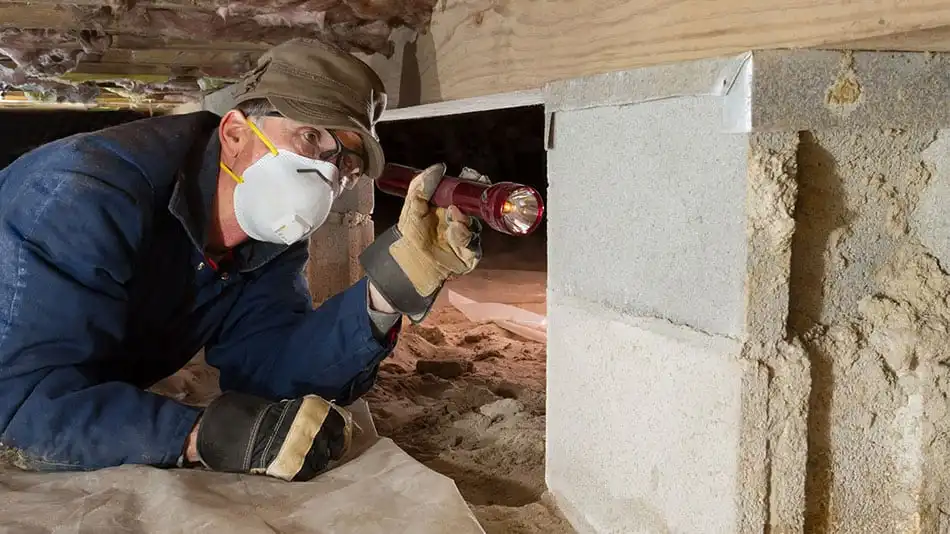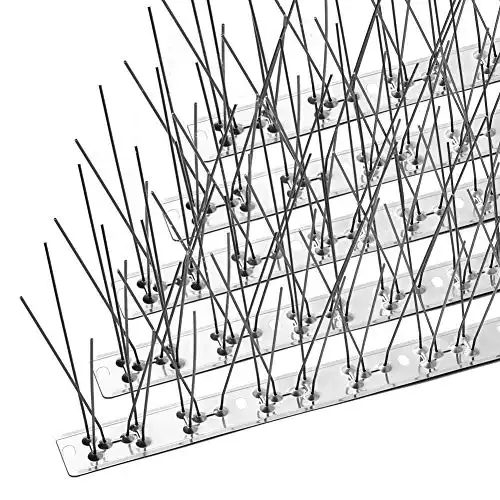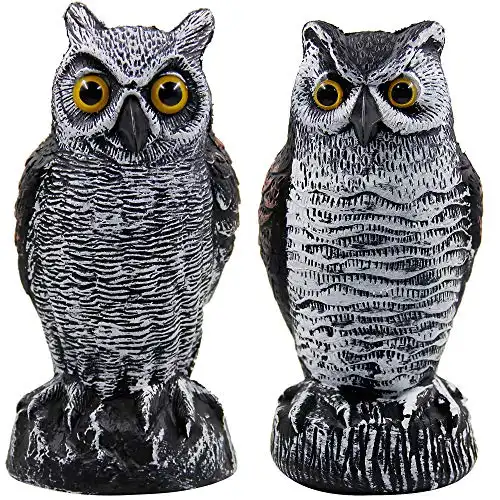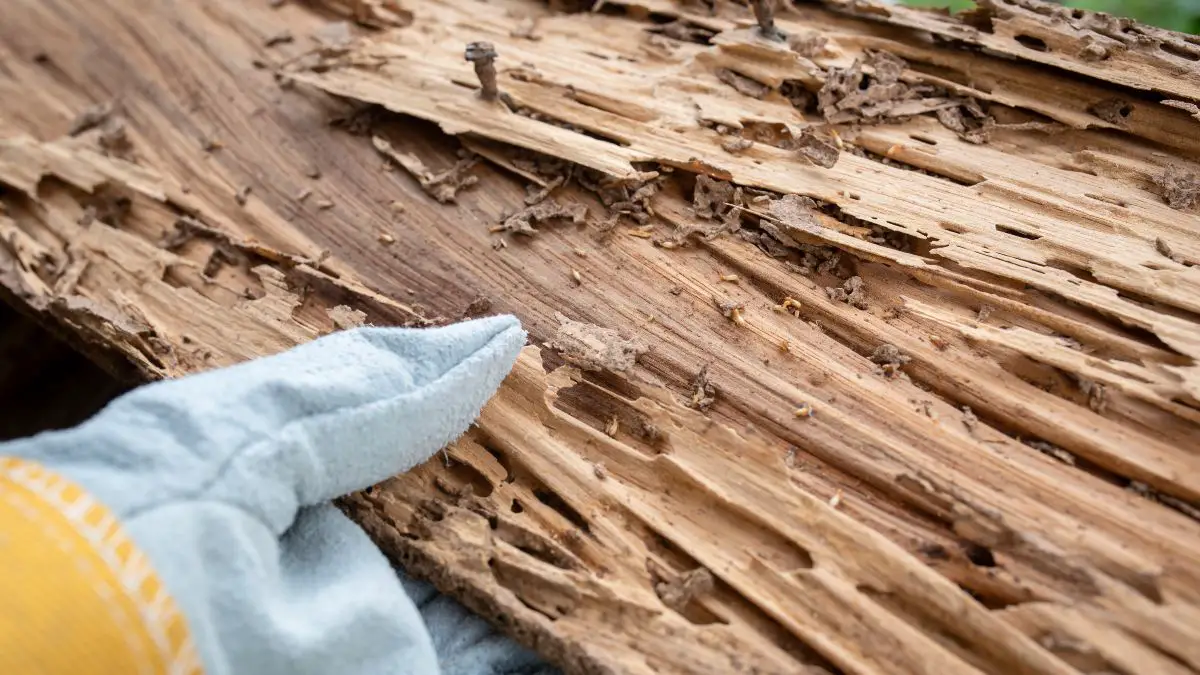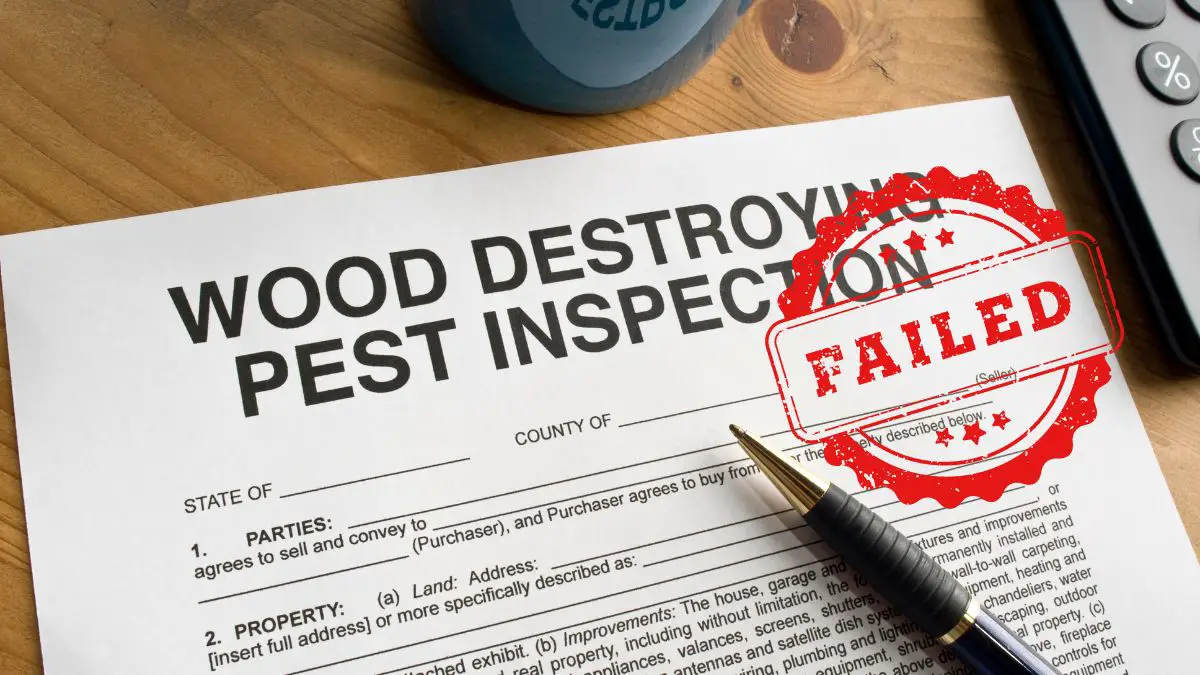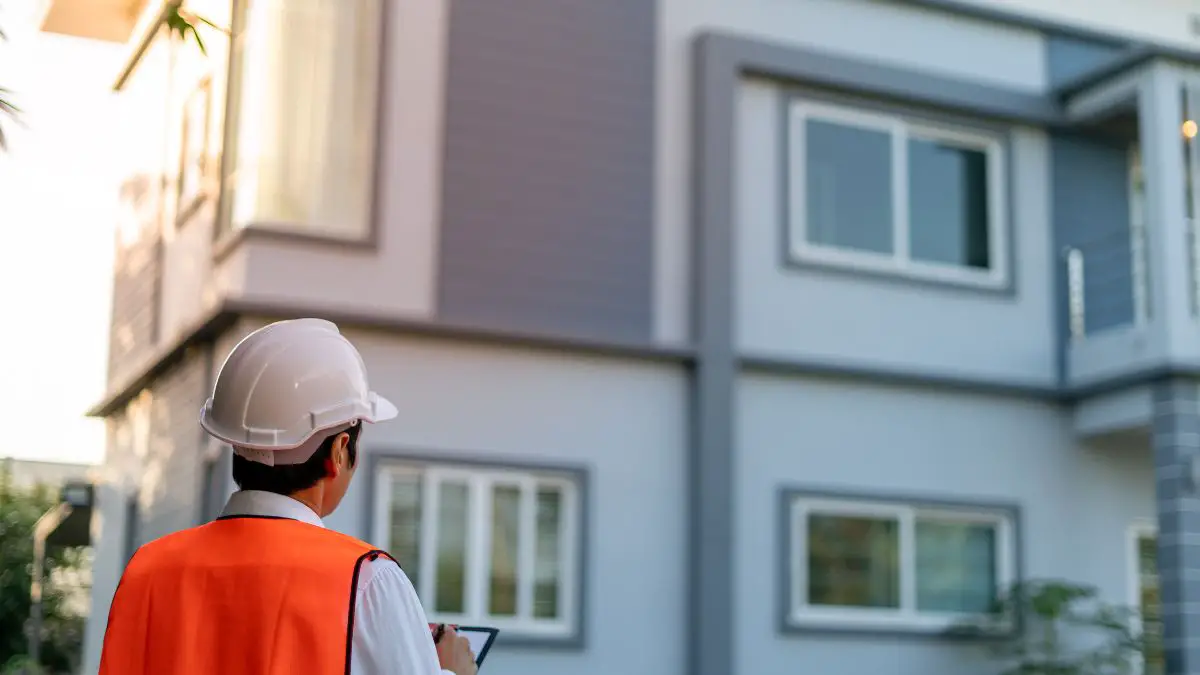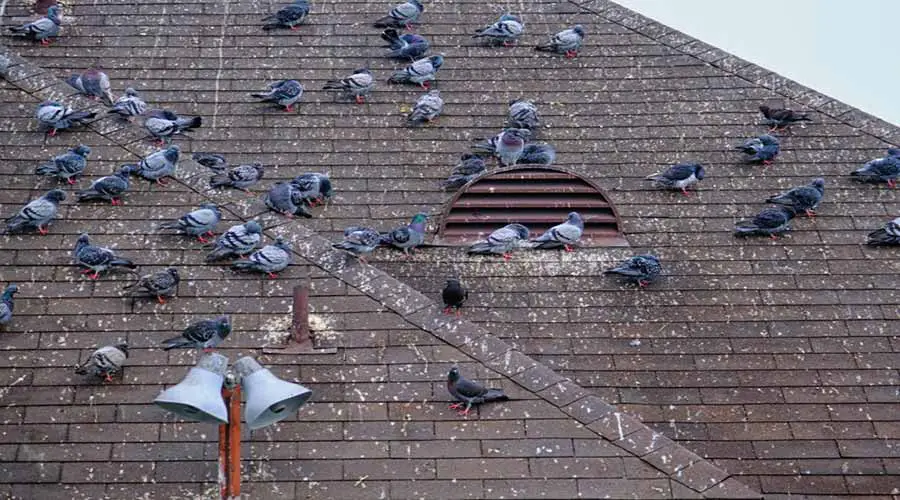
Pigeons top the list of the most social among wild birds. Contrary to assumptions that they are dirty and transmit disease, pigeons are very clean. The only reason humans want them off their roofs is because of distractions and destruction.
Desisting from feeding them as food is their primary cause of convergence can get rid of pigeons on your roof. You can also use deterrents such as bird spikes, distressing sound devices, and repellents to safely and humanely eliminate them from your roof.
Get FREE quotes from licensed pest control technicians in your area today. Whether you need spraying for ants, roaches, spiders, ticks, mosquitos, or bed bugs, We Can Help! All technicians are screened, licensed, and insured.
The roof is not only a shelter but is also the core of a building’s structure. But when it’s up, and you become comfortable and settled in your own space, pigeons, and other birds raid the rooftop for a place to relax and call home.
How Do You Keep Birds And Pigeons Away?
Pigeons and other birds that love hanging around human settlements are generally harmless, so there is no reason to harm or kill them in your quest to rid your home and roof of them.
Here are the five most efficient ways to keep pigeons and other birds off your roof:
- Eliminate the source of food
- Anti-roosting spikes
- Use of pigeon traps
- Scare them away
- Use of repellents
- Nest removal
Eliminating The Source Of Food
Pigeons congregate and breed faster where there is a constant and enough food supply. They breed up five times a year and have a pair of young ones every time.
When you deliberately eliminate the food source from the equation, pigeons may not move on quickly as they scavenge for alternatives. Still, one by one, they will eventually move away to areas that provide a constant food supply.
Anti Roosting Spikes
Installing bird spikes on electricity poles and light lamps will deter birds from slowly encroaching on your space.
Bird spike is a do-it-yourself installation as it is easy to install. But do it correctly. The spikes are thorny and packed closely, not allowing birds any space to settle on.
Pigeon Traps
Pigeon traps are wired cages that provide an easy slide-in entry and spiky exit making caged birds trapped forever.
If you place a pigeon’s favorite food inside, they cannot resist it; they maneuver around the trap, trying to find a way. When they do, they eat the grain but fail to try and escape.
It is up to the home/property to do with pigeons, whatever he deems fit. To kill them or release them far from his home.
Scaring Them Away
Scaring birds away is incorporating things they fear most or making them feel nervous. The birds will indeed feel unsafe or rattled and will keep away;
- Sound devices
- Reflective items/surfaces
- Decoys
Sound Devices
No living creature is in love with too much noise, especially high-pitched ones; even elephants run away from the noise, and so do birds.
Installing ultrasonic and noisy homemade devices will keep startle birds, and eventually, they will tire of the noise and move away from your home.
Ultrasonic devices are technological and work by producing sounds that are deemed distressing. These sounds will make birds think there is a danger lurking around and move on to safer grounds.
Reflective Items & Surfaces
Reflective surfaces and items play around with light and mess up a bird’s eyesight. By doing so, birds become vulnerable to danger as they cannot stay alert to notice their enemies from afar.
It is a far-fetched solution that needs time and patience to bear fruit.
Decoys
Birds are generally scared of birds of prey. Whether perched or flying in the air, birds of prey attack them and their little ones for food.
Finding decoys in the form of birds of prey that pigeons and other birds are scared of, like hawks and falcons, and setting them up on nearby trees and even on top of the roof could be a brilliant idea.
It is good to note that pigeons are intelligent and can tell things apart, so you must buy decoys close to the real and living ones.
The Use Of Repellents
Most repellents come from natural substances; they are not toxic and will not harm birds. Most repellents come in gels packed in tiny pots with magnetic under surfaces that stick on roofs and other metallic places attractive to birds.
Something that’s repelling makes you feel disgusted in a way; these are primarily unpleasant smells and the sight of unpleasant things.
Pigeons find repellants to smell terrible. Gel Glo is an ultraviolet color that resembles a flame that will be a course of alarm to birds.
Even though they will still linger around, expecting the flame to wane off, they tire eventually and recede to other places.
Nest Removal
Growing up, we knew that interfering with bird roosting by removing their eggs or shifting their little ones will make them look for alternative places to nest.
Now, how about removing their nests? Nest removal is similar to a forceful eviction where you come home in the evening, and the place you called home is no more.
Removing bird nests will discourage them from building in the same place because the new nest will receive the same predicament.
What Smell Do Pigeons Hate?
Gel repellent smells toy with a pigeon’s sense of smell, sight, and touch because pigeons are highly intelligent. They are more likely to sense the danger the gel repellent places them and decide to move away independently.
What Smell Do Birds Hate?
Birds generally detest the smell of peppermint oil; while it smells significant to humans, birds smell awful.
What a great way of keeping your home smelling heavenly and simultaneously getting rid of birds turned into a nuisance; it kills two birds with a single stone.
What Home Remedy Keeps Birds Away?
A home remedy is a medicinal value concocted, applied, or ministered without professional prescription but is worth the salt.
- Peppermint
- Ginger
- Honey
- Turmeric
- Garlic etc
For eviction of birds, these ought to be spray laden with mint. Mints are sweet to humans but foul to birds. Cayenne pepper and Cinnamon are spices hated by birds. These are kitchen food spices available in food markets and kitchen gardens.
When mixed with vinegar and water, then applied to the roof and places habitable to birds, they tend to vacate it immediately.
But to be more effective, a concoction of vinegar, lemon, water, and peppermint oil produces excellent results. Cotton balls bearing the concoction are scared around the home and even on rooftops, and pigeons will fly away to more excellent smelling areas.
The smell is strong, but vinegar has acetic acid, which is toxic to birds and could kill them.
Why Are Pigeons Attracted To Your Roof
Pigeons are drawn naturally to humans, so most of their 3-5 years of existence are made of searching for food and hanging around human settlements.
They are known to feed on grains, fruits, & plants as their primary food source, but pigeons will occasionally feed on insects such as grasshoppers, snails, and earthworms as a source of protein supplement.
As they love humans, humans also adore them and have been domesticated since immemorial. Religious entities like Hindus and Muslims are also known to feed pigeons for religious reasons.
As social bird, pigeons thrive in rural settings because it is spacious, but with time, they have adapted to urban settlements and seem not to be bothered by the congestion of humans.
As much as pigeons are generally harmless, pigeon dropping, otherwise known as pigeon guano, is a big brother to homeowners, especially if left on the rooftop for extended periods, as they are highly corrosive to the roof structure.
When they are first attracted to your home, pigeons will start settling on nearby trees and poles while they shyly feed on the bird feeders, but as they gain confidence, they will move closer and closer until they eventually settle on your roof.
Like squirrels and any other animal hanging around human settlements, the availability of food supplied by humans placed on bird feeders and hung on trees draws pigeons.
Because of this reason, pigeons and other birds will find it necessary to roost and nest where it is ideal and convenient for them.
Where Are Pigeons Drawn On Your Roof?
To wake up in the morning to the cooing of pigeons and chirping of birds is fantastic, but when you weigh the amount of damage the birds inflict on your roof, the need to keep them away from it will be so intense.
It would be fun if the bird’s only reason for being on the roof were to find a place to perch and groom, but sadly that is not the case.
It is common to see pigeons cooing and raffling their feathers as they groom on the roof’s peak early in the morning and late afternoons because they wake or prepare to call it a day.
On the rooftop, pigeons are more interested in roof accessories such as;
- The gutters
- Soffit vents
- Rooftop vents- hooded
- Attic
- Chimney
- Below the fascia
The above areas are small and provide a cozy place for pigeons and other birds to perch and weave their nests.
The Gutters
The primary function of the gutter is to drain or discharge rainwater from the roof down to the ground through the eaves. Because they are “U” shaped, pigeons find the open gutter an attractive and readily available space to easily and quickly weave a nest and call it home.
But when the rain pours down, the grass and twigs that form a pigeon’s nest are washed down the drain. But it doesn’t go so smooth all the time, and the dirt clogs the drain.
The dirt will also cause rainwater to overflow and drain on the side, causing damage to the gutters as it tends to tilt when draining the water the wrong way.
The Soffit Vents
A soffit is where the wall and the roof meet to make room for the attic; the purpose of soffit vents is to air the attic by letting in the wind and providing an escape route for stale air from the attic.
But because it is shielded and warm, pigeons will build their nests in the vents to care for their young ones away from prying eyes and protected from extreme weather conditions.
Roof Top Vents
Vents on the rooftop are usually hooded to prevent dirt and particles from falling, but the hood becomes an ideal place for birds to live.
When pigeons collect twigs and grass to build their nests inside the vent hood, the vents are blocked, and the vents stop letting out the hot stale air that is supposed to leave the attic.
It makes the attic hot continuously, and the home’s interior will need an alternative source of air conditioning. Utility bills go up due to pigeons and birds inhabiting the roof vents.
Attic
The roof vents and soffit vents provide an entryway for birds to access the attic. It is like finding an abandoned house that is warm and cozy and can accommodate everyone without the need to worry about the climate or predatory animals like snakes and hawks.
At some point, pigeons cooing in the attic become unsettling, and the dirt they use to make their nests make the attic dirty.
But aside from that, pigeons dropping will sting in the long run contributing to the stuffiness of the attic and dry guano from dust that rises, which potentially cause severe respiratory health conditions to occupants.
Chimneys
Chimneys too are hooded, and the fireplace below supplies it with warmth, and just the roof vents, pigeons and birds find these places attractive and will not pass on the chance to make their nests in them where they will lay eggs, brood, and nature their young ones.
Below The Fascia
Bats and swivel birds are among the birds that make their nests on roofs. But instead of the rooftop, they chose the side where it’s hard for other birds to perch and animals to climb.
But other birds have a fleece which can make a home very uncomfortable. The birds will also damage the walls interfering with their beauty.
Final Thought
Discovering pigeon or, let’s say, any bird poop on your garden furniture, patio, or balcony can be highly irritating and hard to clean. You are more likely to turn to a professional who can deal with it once and for all.
One way or another, getting rid of birds that have established your roof as their roosting and nesting place is complicated and frustrating as the methods you decide to apply to prove futile.
You should understand that these methods may require money and a painful amount of patients. Therefore, you mustn’t encourage birds in your home by avoiding feeding them because food is the primary source of birds and animals in a home.
Get FREE quotes from licensed pest control technicians in your area today. Whether you need spraying for ants, roaches, spiders, ticks, mosquitos, or bed bugs, We Can Help! All technicians are screened, licensed, and insured.


